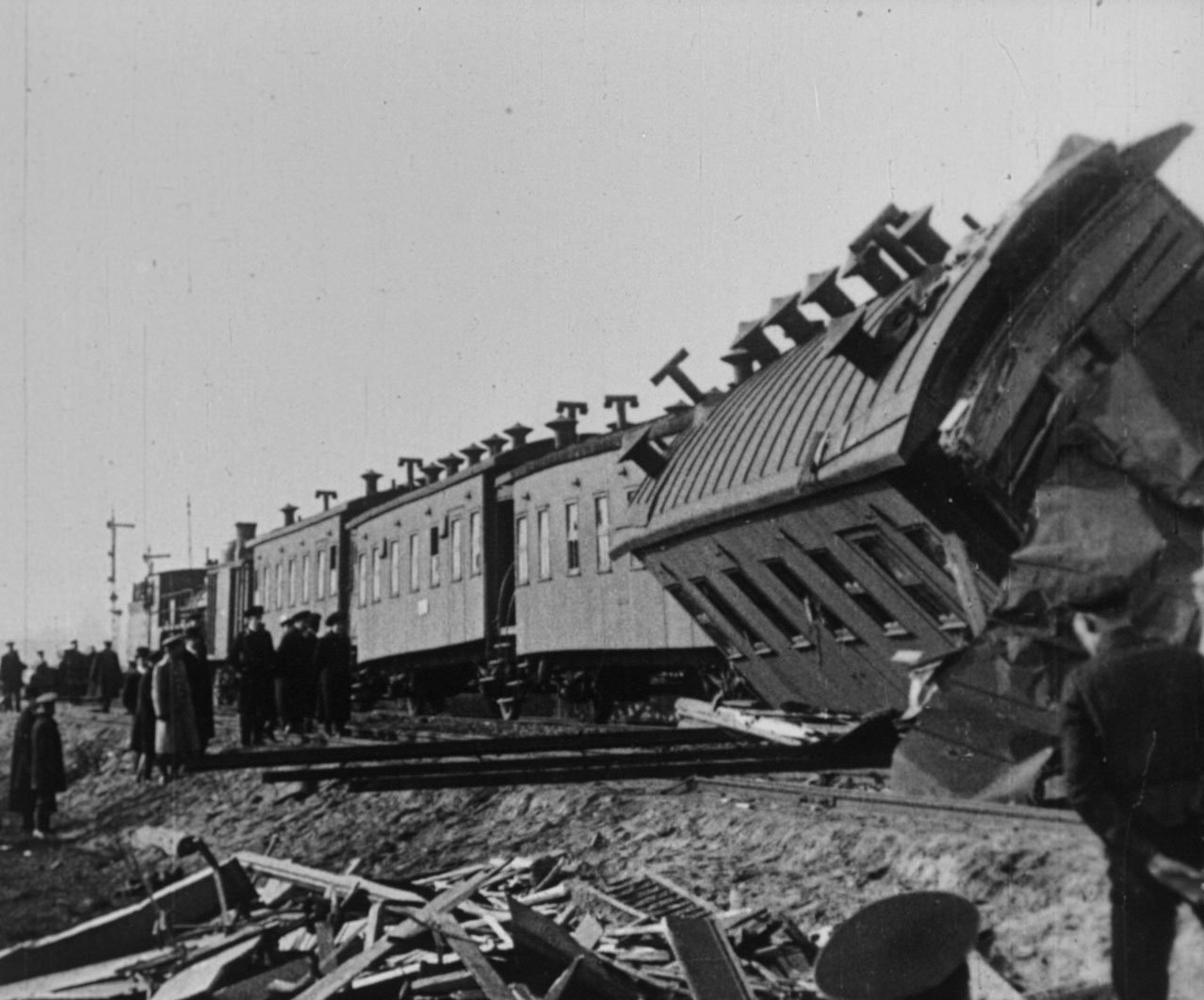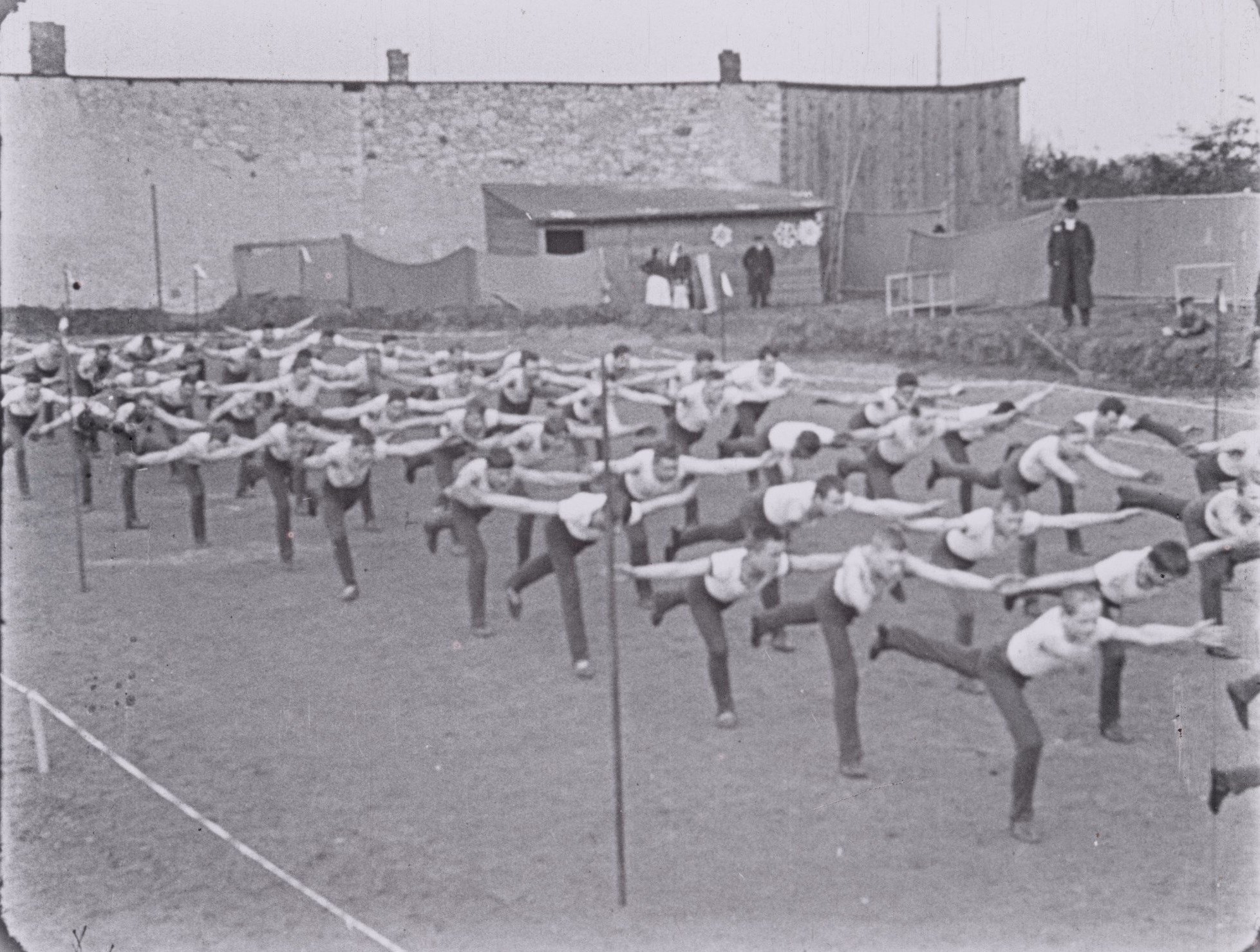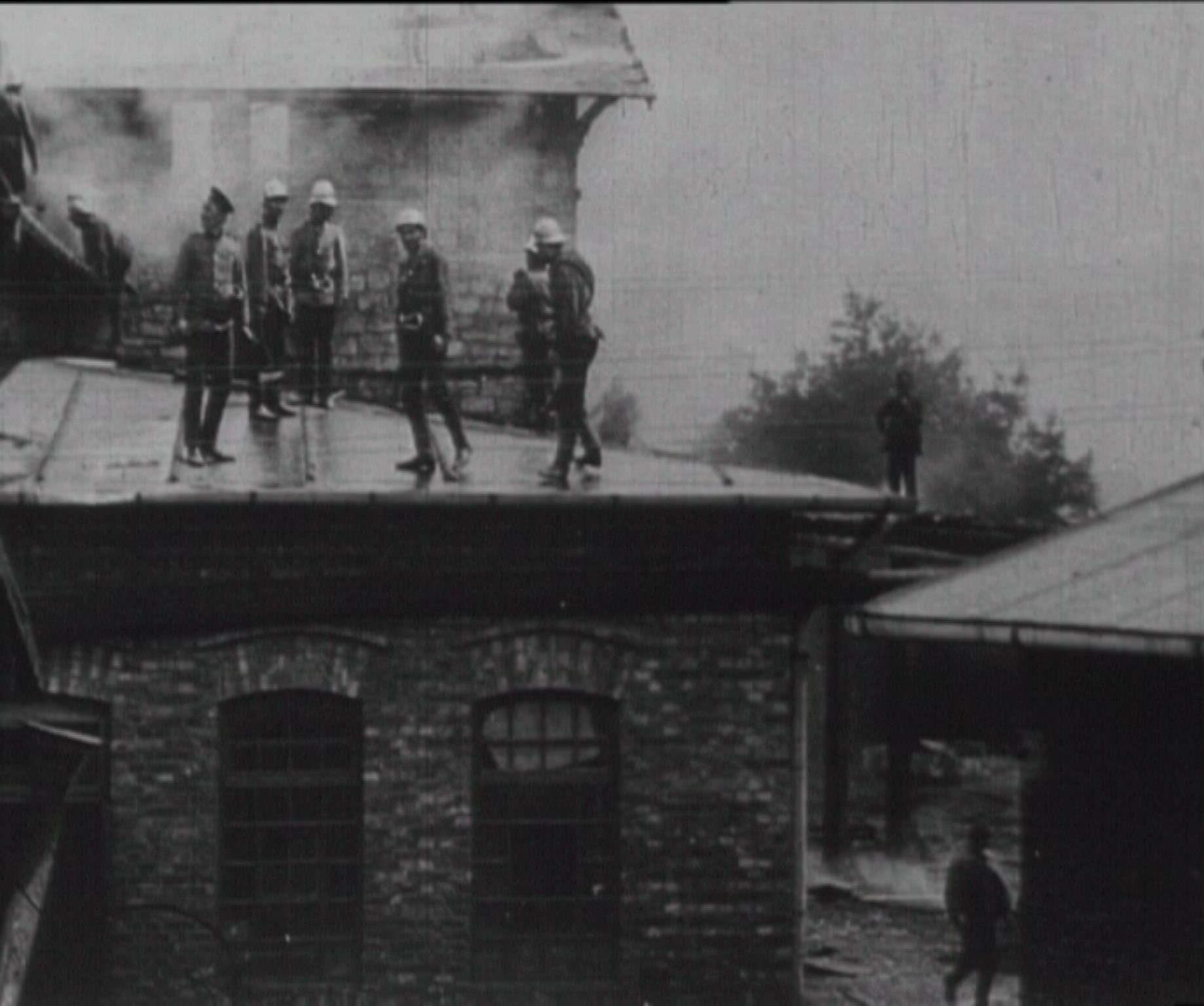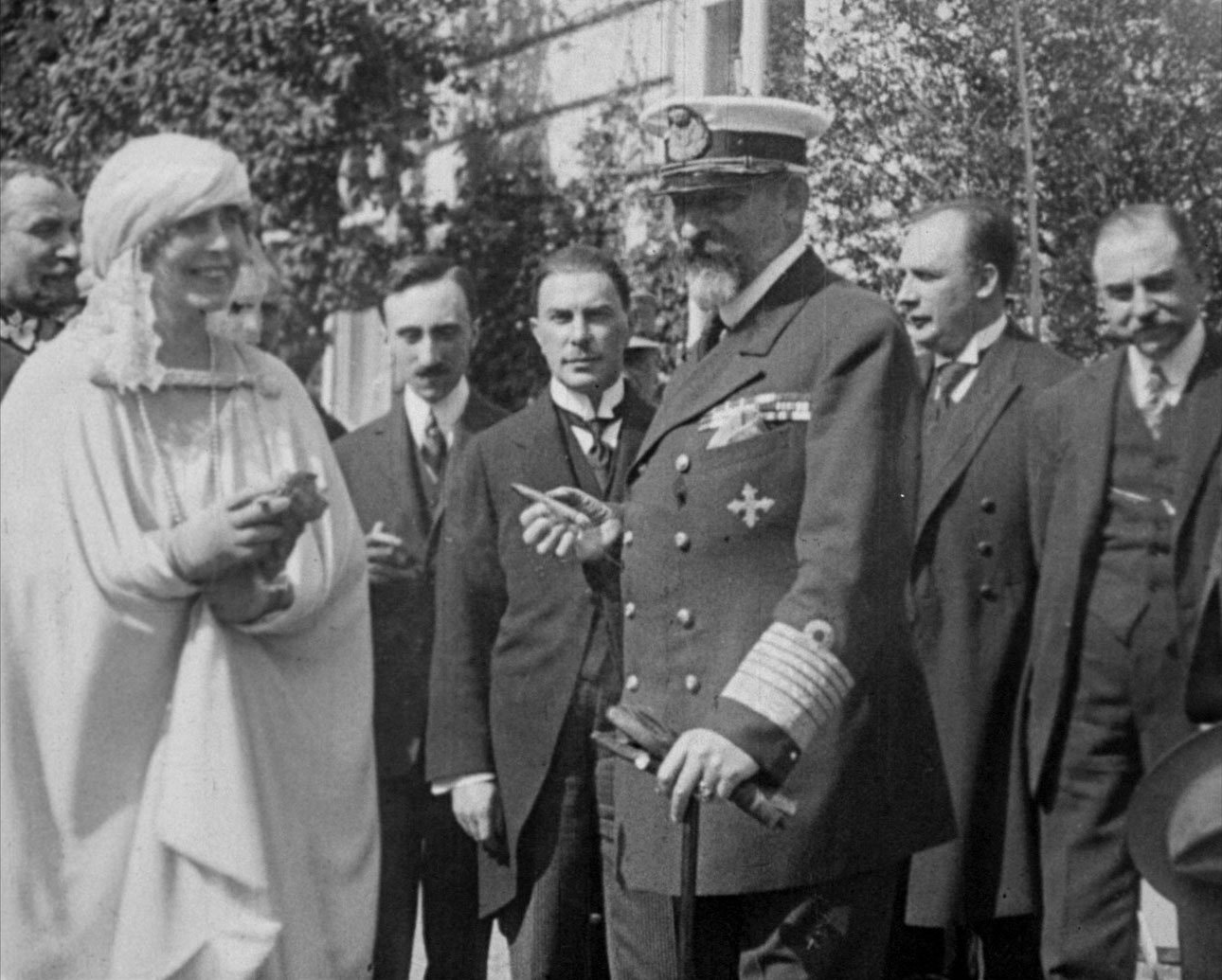
TOUR DE POLOGNE
Tour de Pologne
Amundsen’s Voyage | Wyprawa Amundsena
(?, Poland, late 1920s)
script: Jerzy Gur; animation: Stanisław Dobrzyńsk;
35 mm, 55 m, 20 fps, 3’; bw; intertitles: PL, subtitles: EN; source: FINA - National Film Archive – Audiovisual Institute
In his studio, a draughtsman sketches a traveller in an aeroplane. Suddenly, the plane flies off the page and out through an open door, passes over some mountains and eventually reaches the North Pole. There, in the light of the aurora borealis, the traveller learns that the best chocolate is that made by the company Plutos. This advertisement is one of the few surviving examples of a Polish pre-war animated film.
A 35 mm print made in 1995 from an acetate duplicate negative.
Match Factory on Fire | Pożar zapałczarni | Match Factory on Fire
(Kinematograf Odeon w Częstochowie, Poland, 1913)
dir.: Antoni Krzemiński, Władysław Krzemiński;
35 mm, 78 m, 20 fps, 4’; bw; intertitles: RU/PL, subtitles: EN; source: FINA - National Film Archive – Audiovisual Institute
16 czerwca 1913 roku w częstochowskiej fabryce zapałek wybuchł pożar. Na miejscu zjawiła się nie tylko ekipa strażacka, lecz także… operator z kamerą, który ryzykując życie, wszedł na teren zapałczarni, aby na łatwopalnej taśmie filmowej nitro utrwalić płonące zgliszcza. Właśnie wtedy powstał jeden z najstarszych zachowanych do dziś polskich reportaży filmowych.
Kopia 35 mm wykonana w 1969 roku z kontrnegatywu aceto.
Częstochowa Gymnastic Society in Action | Popis częstochowskiego towarzystwa gimnastycznego
(Kinematograf Odeon w Częstochowie, Poland, 1913)
dir.: Antoni Krzemiński, Władysław Krzemiński;
35 mm, 43 m, 20 fps, 2’; bw; intertitles: RU/PL, subtitles: EN; source: FINA - National Film Archive – Audiovisual Institute
A gymnastics display held on 12 October 1913 featured individual exercises on the horizontal bar, as well as team exercises for boys and girls. In retrospect, this is a rare opportunity to see how physical fitness was taken care of at the beginning of the 20th century and what the sports outfits of the time looked like.
A 35 mm print made in 1996 from an acetate duplicate negative.
Train Wreck | Katastrofa kolejowa
(?, Poland, 1915?)
35 mm, 78 m, 20 fps, 4’; bw; intertitles: RU/PL, subtitles: EN; source: FINA - National Film Archive – Audiovisual Institute
A reportage film showing the effects of a collision between two trains on the Vistula River Railroad and the efforts to remove the derailed carriages.
Kopia 35 mm wykonana w 1967 roku z kontrnegatywu aceto.
Romanian Royal Couple Received at the Łańcut Castle | Przyjęcie Rumuńskiej Pary Królewskiej na zamku w Łańcucie
(Falanga, Poland, 1923)
dir.: Stefan Dękierowski;
35 mm, 277 m, 20 fps, 12’; bw; intertitles: PL, subtitles: EN; source: FINA - National Film Archive – Audiovisual Institute
A reportage film from the visit of the Romanian King Ferdinand I and his wife Maria to the estate of Count Alfred Potocki. This was the first film made by the Falanga studio, which would soon become the largest film studio of interwar Poland.
A 35 mm print made in 1967 from an acetate duplicate negative.
Ciechocinek Health-Resort | Ciechocinek
(?, Poland, 1924)
35 mm, 228 m, 20 fps, 10’; bw; intertitles: PL, subtitles: EN; source: FINA - National Film Archive – Audiovisual Institute
A film showing the most charming corners of one of the most popular health resorts in Poland, as well as the individual facilities and treatments available to patients, such as baths, inhalation therapies and exercise classes. This visit to Ciechocinek in the mid-1920s will show us how a solarium used to look a hundred years ago, as well as attractions that have long been forgotten, such as… electric baths.
A 35 mm print made in 2000 from an acetate duplicate negative.
Warsaw Water Filters | Filtry warszawskie
(?, Poland, koniec lat 20. | late 1920s)
35 mm, 237 m, 20 fps, 10’; bw; intertitles: PL, subtitles: EN; source: FINA - National Film Archive – Audiovisual Institute
The Warsaw Water Filters are a historical monument nowadays. They were built back in the 1880s and, despite their historic nature, have been operating continuously ever since. The slow filters, which purify water using sand, are the only currently active facility of this type in the world. This film report shows how this unique facility has changed since the end of the 1920s, and what has remained unchanged until now.
A 35 mm print made in 1967 from an acetate duplicate negative.
The First Cycle Race Around Poland | Bieg Kolarski Dookoła Polski
(Wytwórnia Doświadczalna, Poland, 1928)
35 mm, 108 m, 20 fps, 4’; bw; intertitles: PL, subtitles: EN; source: FINA - National Film Archive – Audiovisual Institute
In September 1928, the newspaper “Przegląd Sportowy” and the Warsaw Cyclists Society organised the first cycle race around Poland. Starting off from Warsaw, the competitors embarked on a 1,472 km route that led through Lublin, Lvov, Rzeszów, Kraków, Katowice, Poznań and Łódź back to the capital. This reportage film presents the cyclists during the individual stages of the race.
A 35 mm print made in 1978 from an acetate duplicate negative.
Cracow Municipal Electric Train System | Krakowska Miejska Kolej Elektryczna
(Lumen, Poland, 1929)
35 mm, 164 m, 20 fps, 7’; bw; intertitles: PL, subtitles: EN; source: FINA - National Film Archive – Audiovisual Institute
As part of the preparations for the Polish General Exhibition in Poznań, the Kraków authorities commissioned a large-scale propaganda film to show off the monuments, customs and folklore of the city, as well as the most important public institutions. One part of the film was devoted to the Municipal Electric Railway, which was the tram network in the city of Prince Krak. It was supplemented by 12 bus lines serving the more remote districts of the city. The film shows the course of all six tram lines in service at that time, which covered a total length of 23 km.
A 35 mm print made in 1996 from an acetate duplicate negative.
Where Will the Newly Reborn Poland’s Army Be Inspected? | Gdzie odbędzie się przegląd sił odrodzonej Polski?
(?, Poland, ca 1928)
35 mm, 343 m, 20 fps, 15’; bw; intertitles: PL, subtitles: EN; source: FINA - National Film Archive – Audiovisual Institute
The spring and summer of 1929 was when one of the greatest events of the time was planned to take place: the Polish General Exhibition in Poznań. It was intended to present the public with the achievements of the reborn state after it had regained independence in 1918. It was a nationwide event and almost all of Poland took part in its organisation. This report shows the preparations in progress, including the construction of the exhibition pavilions.
A 35 mm print made around 1962 from an acetate duplicate negative.
Weekly News from the Polish General Exhibition in Poznań no. 1 | Tygodnik Aktualności Powszechnej Wystawy Krajowej w Poznaniu nr 1
(Filmotwórnia Propagandowa Przemysłu Polskiego, Poland, 1929)
35 mm, 268 m, 20 fps, 12’; bw; intertitles: PL, subtitles: EN; source: FINA - National Film Archive – Audiovisual Institute
Known as the Pe-Wu-Ka (short for Powszechna Wystawa Krajowa), the Polish General Exhibition was the biggest event of 1929. Crowds from all over Poland flocked to Poznań to learn about the achievements of the first ten-year anniversary of the state. The 111 pavilions presented the successes of the Polish economy, as well as impressive feats in industry, science, art, fashion, sport, tourism and many other fields, and the accomplishments of the Polish diaspora outside the country. The scale of the event was so great that even a separate newsreel titled Weekly News was created. The first instalment presented viewers with, among other things, footage of the exhibition’s opening ceremony, as well as a view of the grounds and some of the exhibition buildings.
A 35 mm print made in 1987 from an acetate duplicate negative.
introduction to the movies: Michał Pieńkowski
section | DIRECTION: POLAND
Music by: Marcin Pater Trio
SUNDAY | OCTOBER 24
18:00 | screening room: STOLICA




